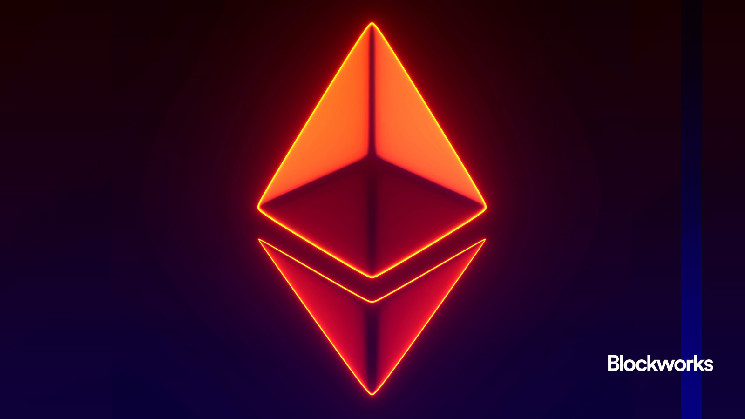Layer-2 sequencers have become dangerously centralized, introducing significant risks that undermine the foundational principles of blockchain. To safeguard network integrity and prevent the erosion of trust, we must urgently transition to a model that does a better job at eliminating single points of failure.
Failing to do so jeopardizes network security and exposes entire ecosystems to serious threats including transaction censorship, security breaches and the potential compromise of customer data and funds.
Since Q2 2024, layer-2 solutions built atop the Ethereum network have been processing an average of 12x more transactions than the base layer. Similarly, on June 6, the total value locked (TVL) of the layer-2 ecosystem rose to an all-time high of $49 billion, signaling the growing adoption of these “execution” networks. However, as these solutions gained traction, an urgent issue has surfaced: the centralization of their sequencer operations.
Sequencers are vital network components responsible for ordering and batching transactions before they reach the Ethereum mainnet. However, they have become a double-edged sword, offering efficiency at the cost of decentralization.
Read more from our opinion section: Web3’s biggest security threat is a familiar monster — centralization
Sequencers manage data flow in Ethereum’s layer-2 solutions by determining transaction order when multiple transactions occur simultaneously. When two users attempt to process a transaction at the same time, the sequencer decides who goes first.
However, many of these tools carry the potential risks associated with a single entity having control. While centralized components can enable faster transaction processing, they also come with significant drawbacks, such as the risk of censorship.
Such concerns are not unfounded. Today’s leading layer-2s all rely on “centralized” sequencers, which generally means the company that built the rollup takes care of its sequencing operations all by itself.
For instance, data shows that during March alone, Coinbase’s Base network generated $30 million in top-line revenue for the firm, just based on the sequencer fees — a figure that annualizes to approximately $360 million per year.
Therefore, in a rapidly decentralizing landscape where trust is meant to be minimized, the notion of a single company controlling a crucial element of a blockchain’s operation naturally raises eyebrows.
Christine Kim, vice president of research at Galaxy Digital, contends that decentralization should not be viewed as a binary state but rather a spectrum, with centralized influence kept at a bare minimum. She has emphasized:
“A decentralized sequencer may be one of the hardest initiatives for a rollup to work towards…to improve its decentralization and resiliency […]”
On the subject of minimizing centralized reliance, users of Consensys-backed zkEVM rollup Linea recently suffered losses amounting to $2.6 million. However, what was most shocking about the incident was the project dev team’s unanimous decision to pause the sequencer and “censor attacker addresses to protect the users and builders.”
This incident highlights the critical importance of decentralization and the dangers of centralization of the sequencer. By removing single points of failure, decentralized sequencers make networks more resilient to attacks and technical failures. Moreover, they better reflect the core values of blockchain technology, especially in terms of transparency and efficiency.
In this regard, most layer-2 solutions are quickly recognizing the benefits of distributing control. By leveraging a network of validators and block producers, layer-2 solutions can randomly select and rotate sequencer nodes. These parties share the responsibility of transaction ordering and batch submission, enhancing the network’s security and resilience.
This method ensures a fair and secure sequencing process while maintaining high performance, significantly reducing the risk of censorship or manipulation. That in turn encourages community participation and aligns incentives between the network and its users, thus adhering more closely to the core principles of blockchain technology.
Recently, Vitalik Buterin proposed a classification system for rollup networks — ranging from stage 0 to stage 2 — expressing his belief that most leading rollups today rely on some form of “training wheels.”
Read more from our opinion section: Ethereum is ‘much more centralized than folks realize’: Blocknative’s Matt Cutler
Moving forward, layer-2s must shed these provisional measures or risk stagnation. While centralization undeniably offers lucrative benefits and operational ease, it primarily serves the operator’s interests. Decentralization, though challenging, ushers in long-term advantages for both projects and their communities.
This “self-reinforcing model” reduces security costs and initiates a positive cycle. Higher community participation leads to increased staking and enhanced security, attracting more dapps and innovators.
Moreover, the steady liquidity inflows to DEXs post-sequencer decentralization demonstrate that users can accept slight latency increases when properly incentivized. Beyond enhancing security through mechanisms like liquid staking, sequencer decentralization aligns with value distribution to industry participants and contributors.
Revenue sharing models like sequencer mining improve user retention, creating a direct correlation between community participation, network security and ecosystem growth. With technical primitives and functional examples readily available, even Bitcoin layer-2s are preparing to offer mining rewards through decentralized sequencers.
Going forward, it is simply not enough for the Ethereum layer-2 ecosystem to rely on just one network to have decentralized sequencers. Making the transition across multiple networks is paramount to safeguarding the integrity of blockchain technology. Established layer-2s should act swiftly to avoid obsolescence and ensure the safety of their users.







Leave a Reply